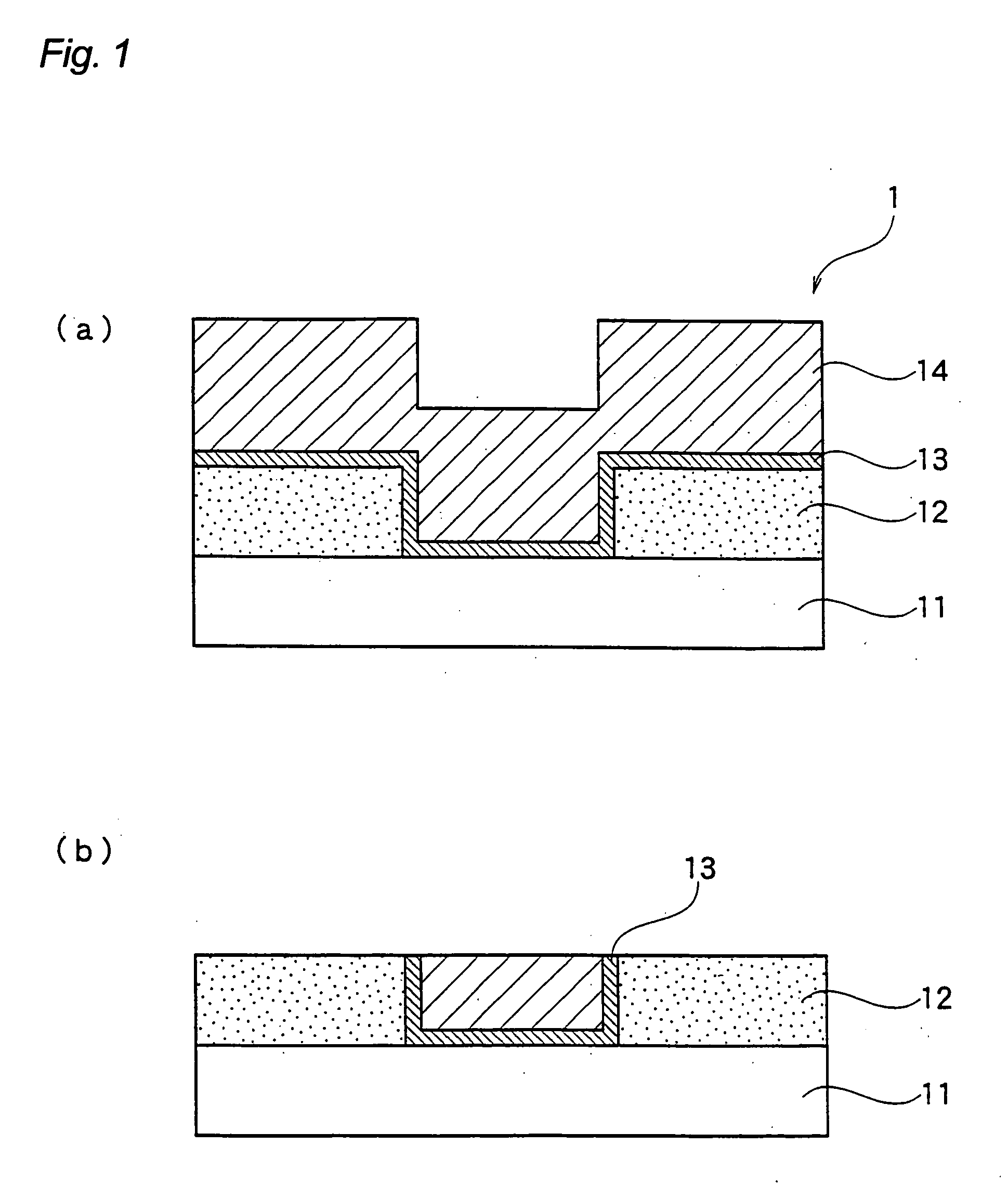Cleaning composition, method for cleaning semiconductor substrate, and process for manufacturing semiconductor device
- Summary
- Abstract
- Description
- Claims
- Application Information
AI Technical Summary
Benefits of technology
Problems solved by technology
Method used
Image
Examples
examples
[0099] The present invention is further described with reference to the following examples, but it should be construed that the invention is in no-way limited to those examples.
[A] Preparation of Cleaning Composition
(1) Preparation of Organic Polymer Particle-Containing Water Dispersion
preparation example a1
[0100] In a flask, as monomers, 5 parts by mass of methacrylic acid, 20 parts by mass of divinylbenzene, and 75 parts by mass of styrene; 2 parts by mass of ammonium persulfate as a polymerization initiator; 0.1 part by mass of dodecylbenzenesulfonic acid as a surfactant; and 400 parts by mass of ion-exchanged water as a solvent were placed, and they were heated to 70° C. with stirring in a nitrogen atmosphere and then further stirred at the same temperature for 8 hours to perform polymerization. Thus, a water dispersion containing organic polymer particles (1) (referred to as “crosslinked organic polymer particles (1)” hereinafter) having a carboxyl group and a crosslinked structure and having an average dispersed particle diameter of 210 nm was obtained. Then, ion-exchanged water was added to the water dispersion to adjust the content of the crosslinked organic polymer particles (1) to 10% by mass.
preparation example a2
[0101] A water dispersion containing organic polymer particles (2) (referred to as “crosslinked organic polymer particles (2)” hereinafter) having a carboxyl group and a crosslinked structure and having an average dispersed particle diameter of 190 nm was obtained in the same manner as in Preparation Example A1, except that 5 parts by mass of methacrylic acid, 10 parts by mass of trimethylolpropane triacrylate, 35 parts by mass of styrene and 50 parts by mass of methyl methacrylate were used as monomers. Then, ion-exchanged water was added to the water dispersion to adjust the content of the crosslinked organic polymer particles (2) to 10% by mass.
PUM
 Login to View More
Login to View More Abstract
Description
Claims
Application Information
 Login to View More
Login to View More - R&D
- Intellectual Property
- Life Sciences
- Materials
- Tech Scout
- Unparalleled Data Quality
- Higher Quality Content
- 60% Fewer Hallucinations
Browse by: Latest US Patents, China's latest patents, Technical Efficacy Thesaurus, Application Domain, Technology Topic, Popular Technical Reports.
© 2025 PatSnap. All rights reserved.Legal|Privacy policy|Modern Slavery Act Transparency Statement|Sitemap|About US| Contact US: help@patsnap.com


